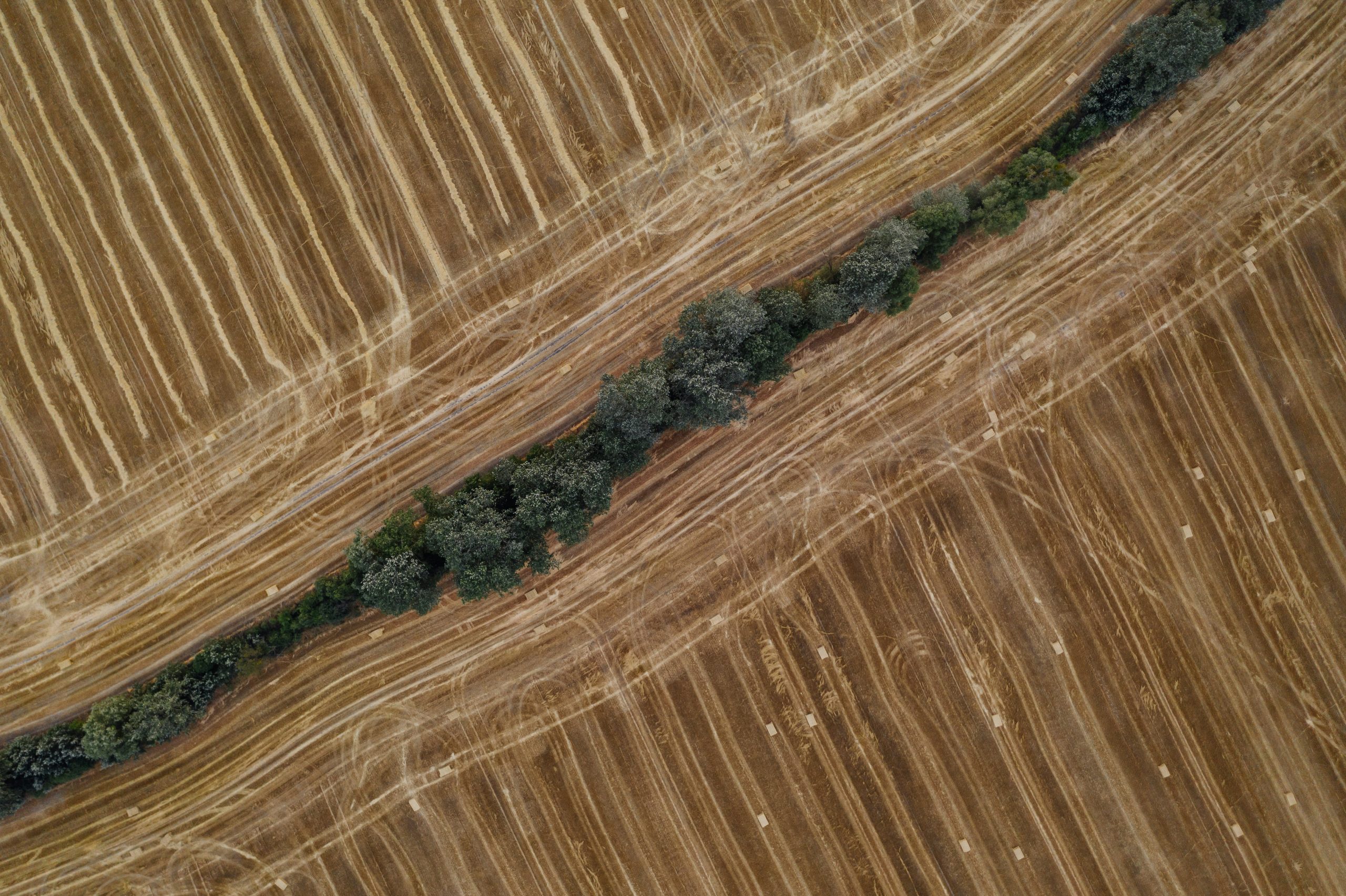An extreme weather event represents a departure from typical weather conditions that is rare for a specific location and time of year. These occurrences, when they persist, can escalate into extreme climate events, encompassing phenomena like heatwaves, cold spells, heavy rainfall, storms, floods, landslides, droughts, wildfires, and intense storms. Such events, especially when they converge, are known as compound events and can inflict severe harm on human lives and activities.
Detecting and attributing extreme weather and climate events concerning agriculture are vital for comprehending their impacts. While these events occur regardless of climate change, the frequency and severity may be influenced by it. Attribution studies entail comparing the likelihood of extreme events occurring over time using observed climate data. For instance, a significant proportion of heatwave events since 2000 can be linked to climate change. However, attributing droughts to climate change is more intricate due to their multifaceted nature.
Recent trends indicate an uptick in extreme weather and climate events across Europe. Heatwaves have become more frequent, with summer temperatures soaring annually since 2015. Heavy precipitation extremes have increased in Northern and Western/Central Europe, while the Mediterranean basin has experienced altered precipitation patterns, leading to heightened agricultural droughts in Western/Central and Southern Europe. Flash droughts, marked by rapid drought intensification, have become more prevalent, especially during the crop-growing season.
Climate modeling enables the projection of future trends in extreme weather events. Projections suggest a broad increase in extreme precipitation across Europe, potentially resulting in catastrophic repercussions for agriculture. Likewise, an escalation in the frequency and intensity of heatwaves is anticipated, particularly in the Mediterranean region. Agricultural droughts are projected to intensify in Western/Central and Southern Europe, while frost and cold spells are predicted to diminish.
Agriculture is highly susceptible to extreme weather events, which can inflict physical damage on crops and livestock, culminating in economic losses. Past extreme events have already caused yield reductions, and future impacts are expected to be substantial, particularly in Europe, where extreme events are projected to exacerbate. Hot and dry conditions are identified as the most detrimental to crops, with heat stress and drought significantly contributing to agricultural productivity losses.
Understanding the impacts of extreme weather events on agriculture necessitates a comprehensive approach, combining empirical, process-based, and integrated modeling techniques to accurately assess potential impacts and develop effective mitigation measures for Europe’s agricultural sector.

Economic losses for agriculture
Economic losses serve as a primary indicator for assessing the impacts of extreme events. Since 1980, extreme weather events have inflicted damages nearing €487 billion on EU economies, indicating both high interannual variability and a steady increase in thirty-year rolling averages since 2008. Regarding the agriculture sector, studies estimate that agriculture losses comprise over 50% of total drought losses in Europe, with the Mediterranean region bearing the highest share. Notably, a mere 3% of extreme events account for 60% of economic losses.
Global assessments underscore the economic impact of drought on staple crop production, with cumulative production losses exceeding €150 billion worldwide between 1983 and 2009. Significant economic losses have been recorded in several European countries due to extreme events, such as the 2003 summer drought and heatwave, which incurred billions of euros in damages and uninsured losses across the EU.
Analyses using Integrated Assessment Modeling project staggering increases in future economic damage. Historical damage from heatwaves amounted to 0.3 – 0.5% of European GDP and is projected to increase fivefold by 2060. Similarly, the economic cost of drought for Europe’s agriculture sector stood at approximately €4.8 billion annually in 2015 and could surge to €28.6 billion by 2100 under pessimistic scenarios.
Impacts on Food Security
Extreme climate events can detrimentally affect all pillars of food security, including availability, access, utilization, and stability. Extreme heat and drought reduce crop and animal productivity, while increased frequency and severity of extreme events lead to instability in food supply. Additionally, post-harvest losses due to mycotoxins and disruptions in food storage and transport networks further exacerbate food insecurity. Climate change extremes may also increase the incidence of crop failure and price variability, contributing to food insecurity.
The impact of Russian conflict
The aftermath of Russia’s invasion of Ukraine, coupled with high input costs and food inflation, continues to burden agricultural markets and consumer choices in the EU. Winter droughts following the previous year’s hot and dry summer have exacerbated water scarcity in regions already facing record-low water reservoir levels, potentially prompting affected farmers to shift away from water-intensive crops. Despite some improvements in the EU’s macroeconomic forecast compared to autumn 2022, uncertainties regarding energy supply for the upcoming winter and recent financial market tensions persist. While lowering energy inflation may offer some relief in input prices, fertilizer and energy costs remain significantly elevated compared to early 2020. Farmers are adapting by opting for crops with lower fertilizer needs, anticipating below-average mineral fertilizer use in the upcoming season.
Food inflation remains significant, with EU average food prices 19.5% higher in February 2023 than a year earlier. Consumers are expected to favor basic, more affordable food items and adjust their preferences between different types of food, such as increasing poultry consumption and reducing beef consumption. Despite some declines in input costs, food prices are expected to remain high before eventually decreasing.
Droughts and other climate events are expected to impact the supply of certain agricultural products, such as the significant decrease in EU olive oil production in 2022/2023 leading to higher prices. Animal diseases, like avian flu and African Swine Fever, also contribute to uncertainties in EU livestock production, resulting in reduced exports of poultry and pigmeat.
The European Commission’s spring 2023 short-term outlook report for EU agricultural markets provides insights into various agri-food sectors. Arable crop production is forecasted to rebound assuming normal weather conditions, with maize yields dropping due to hot and dry weather in the previous season. Oilseed and sugar beet production are anticipated to increase, while specialized crops like olive oil may see reduced consumption and exports due to lower production and higher prices. Milk and dairy production are expected to decrease slightly, while cheese exports may grow. Beef and pigmeat production is forecasted to decline further, with poultry consumption and imports on the rise.

Solutions for these challenges
The full range of adaptation options in the agriculture sector includes both top-down measures, which involve knowledge production and risk management tools, and autonomous adaptation measures implemented at the farm scale.
Top-down adaptation measures, supported by public or private entities, include initiatives such as climate change observatories, early warning systems, and providing access to risk management tools like insurance and hedging. Autonomous adaptation aims to increase resilience and protect assets or stabilize income at the farm level.
Various solutions are available to enhance the sector’s adaptive capacity to adverse climate events and make agriculture more climate-resilient. While no definitive typology of adaptation options exists, they can be classified based on parameters such as scale, type of product, nature of the option, climate risk addressed, and implementation time scale.
Depending on the scale, responsibility for implementing adaptation options rests with different actors. Top-down approaches involve authorities or organizations at the sub-sectoral level, while farm-level adaptation measures are implemented by farmers themselves, covering aspects like agronomy, equipment, or land management.
Adaptation options for agricultural production systems include both pre-event measures to prevent or reduce the effects of extreme events and post-event measures to restore damaged assets and support financial recovery. These options encompass a range of activities, from establishing observatories and early warning systems to investing in research and innovation for climate-smart practices.
Measures for preparing and responding to extreme events include monitoring, modeling, and forecasting systems, as well as the establishment of early warning systems to provide advance notice of imminent extreme weather events. Responding to extreme events involves actions by civil protection organizations and disaster assistance provided by public authorities.
Recovery strategies focus on providing financial support to farmers for crop replanting or infrastructure repair, as well as technical assistance and market access support. Insurance, mutual funds, hedging, and risk pooling are financial instruments that can help farmers mitigate the impacts of extreme weather events and stabilize their income.
At the farm level, farmers can deploy measures to protect assets, stabilize income, and increase resilience against climate extremes. These measures include improving irrigation efficiency, enhancing flood plain management, introducing heat-tolerant crop varieties, and implementing agroforestry practices.
Evidence suggests that practices like reduced tillage and agroforestry can increase productivity and resilience in the face of climate extremes. Autonomous adaptation measures, such as changing crop types and adjusting fertilizer usage, are being adopted by farmers in response to perceived increases in extreme weather events. However, upfront costs remain a significant factor in the adoption of adaptation practices.
The ResAlliance project
ResAlliance is a thematic network project funded by the Horizon Europe Programme of the European Union, aiming to address the increasing frequency and intensity of extreme weather events exacerbated by climate change, particularly in vulnerable regions like the Mediterranean basin. The project seeks to improve landscape resilience in agriculture and forestry by enhancing information and knowledge flow and increasing the capacity of foresters and farmers to implement innovative solutions.
The project focuses on gathering and assessing knowledge, identifying gaps, barriers, and good practices to achieve resilient landscapes, with a specific emphasis on measures against the hazards of climate change. It operates across four thematic areas:
Governance: ResAlliance aims to enhance governance structures related to landscape resilience, ensuring effective policies and regulations are in place to support adaptation and mitigation efforts. This includes promoting collaboration and coordination among stakeholders at various levels to facilitate the implementation of resilience measures.
Management Practices: The project evaluates and promotes sustainable management practices that contribute to landscape resilience. This involves identifying best practices for land use, soil management, water conservation, and biodiversity conservation, among others, to minimize the impacts of extreme weather events and climate variability.
Technology: ResAlliance explores the role of technology in enhancing landscape resilience, including the adoption of innovative tools and techniques for monitoring, forecasting, and managing climate-related risks. This may involve the use of remote sensing, precision agriculture, climate-smart farming practices, and digital platforms for information sharing and decision-making.
Finance: The project addresses financial barriers to landscape resilience by identifying funding mechanisms and investment opportunities to support the implementation of adaptation and mitigation measures. This includes exploring public-private partnerships, innovative financing instruments, and incentives to encourage investment in resilient agriculture and forestry practices.
By focusing on these thematic areas, ResAlliance aims to equip foresters and farmers in Mediterranean countries with the knowledge and tools necessary to adapt to climate change, minimize risks, and build resilient landscapes. Through collaboration and knowledge exchange, the project seeks to overcome barriers and accelerate the adoption of effective resilience solutions, ultimately contributing to the sustainability and viability of agriculture and forestry in the face of climate challenges.